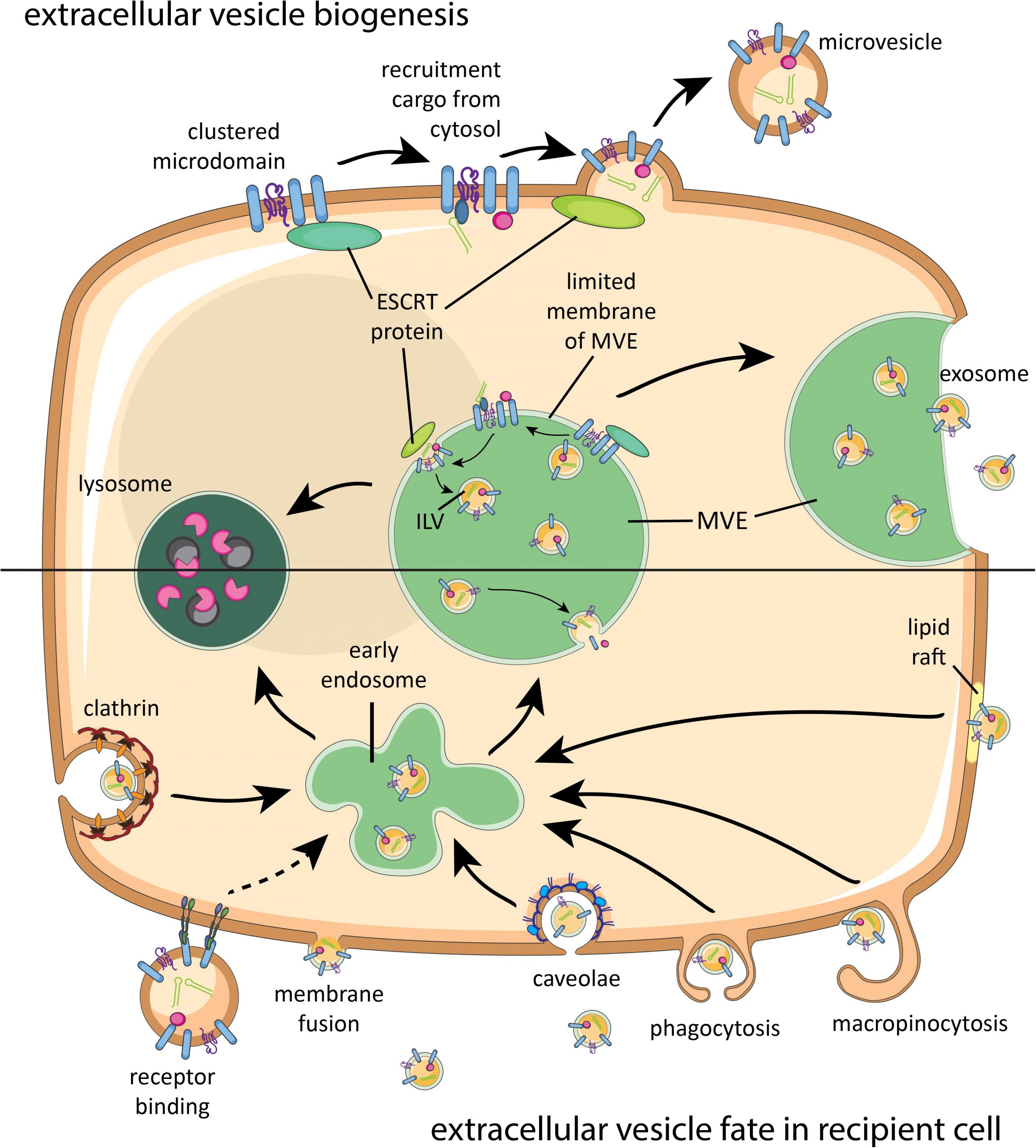Extracellular Vesicle heterogeneity and tissue targeting
We are fascinated by how cells communicate via Extracellular Vesicles (EVs), which are packages of information encoded in proteins and genetic material. To study these small (50-300 nm) vesicles and assess their heterogeneity, we develop methods for high-throughput single vesicle analysis and to assess the protein and RNA composition of EV subsets. We investigate how proteins, glycans and lipids on the EV surface determine tissue-specific binding/uptake of EVs and their functional effects.
EV in host-pathogen interactions.
We study EV-biology in the context of virus- and microbial infections. This research teaches us about the roles of EVs in the battle between hosts and pathogens. We also exploit pathogens that interfere in EV biogenesis to learn about host mechanisms underlying EV formation and function. A major focus is on delineating the role of EVs in picornavirus-spreading and antiviral immune responses. Picornaviruses can hide in EVs that protect them against neutralizing antibodies. We investigate virus- and host proteins and molecular pathways involved in the production and function of EVs and EV-enclosed viruses.
 Infection Biology
Infection Biology
Department of Biomolecular Health Sciences – division Infectious Diseases and Immunology
Esther Nolte-‘t Hoen Group

Mechanisms of host-pathogen communication
Esther Nolte-'t Hoen Group

Esther Nolte-‘t Hoen

Xinyi Pei

Marije Kuipers

Kyra Defourny

Bram Tuinte

Xiaoqian Gong

Jasper van den Ende
